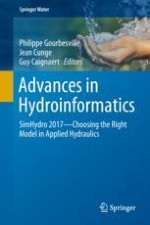2018 | OriginalPaper | Buchkapitel
Dam Break Simulation Using DHI-MIKE21 in the Eg Hydropower Plant, Mongolia
verfasst von : Janrai Soninbayar, Philippe Audra
Erschienen in: Advances in Hydroinformatics
Verlag: Springer Singapore
Aktivieren Sie unsere intelligente Suche, um passende Fachinhalte oder Patente zu finden.
Wählen Sie Textabschnitte aus um mit Künstlicher Intelligenz passenden Patente zu finden. powered by
Markieren Sie Textabschnitte, um KI-gestützt weitere passende Inhalte zu finden. powered by
